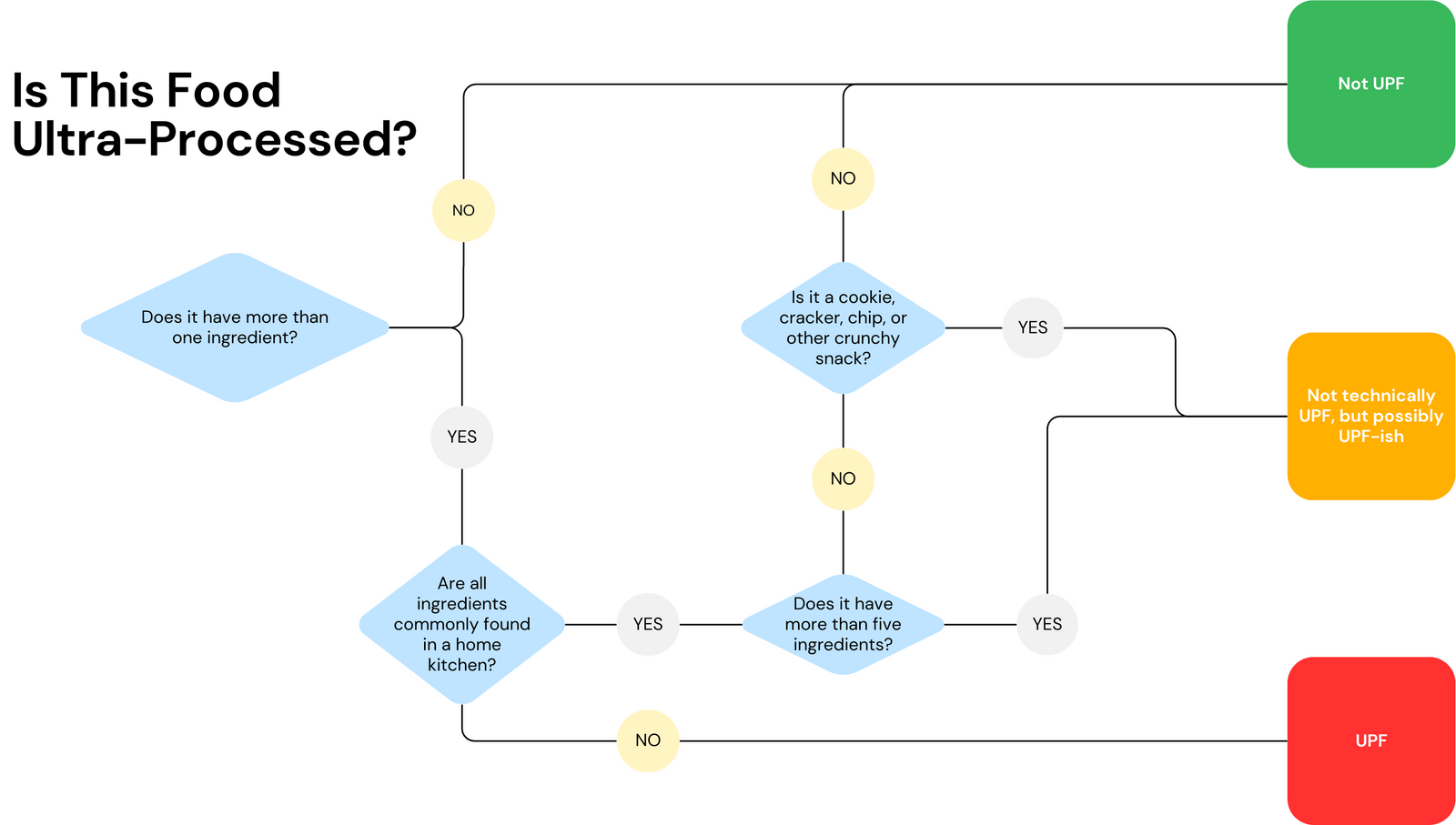If you’re like me, the term ultra-processed food (UPF) evokes images of chips coated in cheese dust so incandescently orange that each is a small sun, too bright to gaze upon directly, or chewy fruit candies made of sugar, wax, artificial colors and flavors, but no actual fruit. These absolutely do meet the definition, but the insidious thing about UPF is that a lot of seemingly innocuous stuff does as well. Why does potato bread contain sodium stearoyl lactate, datem, and guar gum?
In this post I divide food into Ultra-Processed, UPF Adjacent Foods, and Minimally Processed Foods. As I go I briefly explain why I think these categories make sense.
Characteristics of Ultra-Processed Foods (UPF)
Meets ANY of the following conditions:- Contains natural or artificial flavorings.
- Contains natural or artificial colorings.
- Contains preservatives.
- Contains conditioners, emulsifiers, novel fats or sugars, sugar substitutes, ingredients that serve no clear purpose.
- Put another way, if it contains any ingredient not commonly found in a home kitchen.
- Examples include most snacks, sodas, energy drinks, most supermarket bread, most canned goods, frozen dinners and so on. Check the ingredients!
The next category - UPF Adjacent Foods – is one I've made up. This is a bit more of a gray area, but I think it's worth considering because as more people begin to avoid UPF, a trend that is already underway, food companies will have stronger and stronger incentive to create foods that aren't technically UPF, but that push the same hedonic buttons.
Strictly, the foods that fall into this category are not UPF, but if the goal is to avoid the food environment created by ubiquitous UPF, it's worth paying attention to UPF-ish items.
Characteristics of UPF Adjacent Foods
Is not UPF but meets ANY of the following conditions:
- Contains more than five ingredients.
- Contains lots of fat, sugar, and salt in an easily eaten form.
- Is obviously trying to mimic a recognizable UPF food.
- Examples include UPF-free snacks, particularly chips, cookies, granola bars, and so on, as well as prepared frozen foods.
Finally, we come to Minimally Processed Foods. Like UPF, some of these, such as meat, vegetables, and rice, are obvious. But others, like sugar, flour, and even some chocolate, are not. The unifying characteristic is that these are raw ingredients.
Minimally Processed Foods
Do not meet the criteria for UPF or UPF Adjacent.
- Simple - either a single food or fewer than five ingredients.
- Almost always requires some further preparation, though there are exceptions, like fruit.
- Examples include meat, cheese, fruits, vegetables, pasta without additives, canned goods without additives, yogurt without additives, traditional cheeses, sugar, butter, flour, and on and on.
These are not perfect categories. It bears repeating that one of the most frustrating aspects of the UPF framework is how arbitrary it is. There are UPF foods that are almost certainly innocuous, and a diet of chocolate chip cookies and french fries made from scratch probably wouldn't be ideal.
Yet the utility of UPF as a concept is that it is so vague, because it is trying to describe the food environment, which is far more complex than any single factor. I'll delve into all that in my next post. In the meantime, it's worth looking at all the places UPF comes into our diets, which I hope this post will help with.


2 comments
Bravo. Good info and well written as always. I have an attention span about equivalent to a cat if I’m not interested in something or it’s not food, and I read through this one quickly and with great interest. So hard to stay away from UPF, especially the ones with some type of emulsifier. Those are ubiquitous.
Thanks for writing about this. I need constant reminders to PAY ATTENTION!